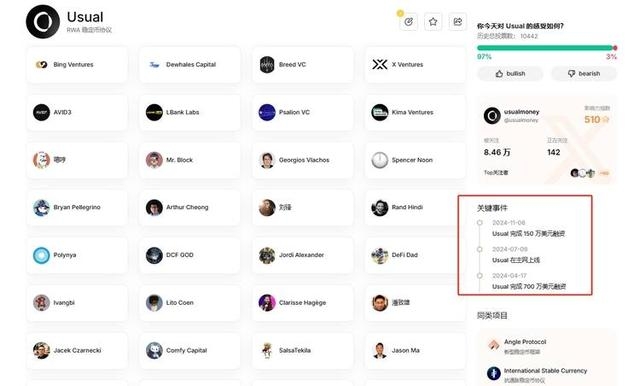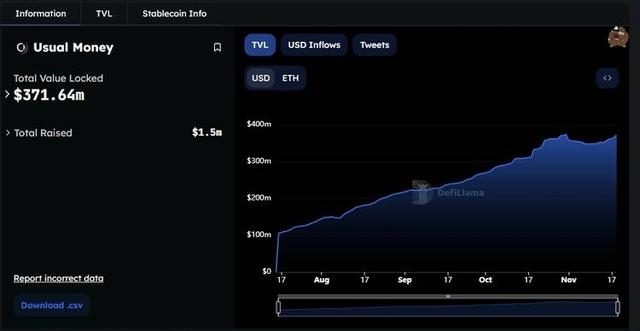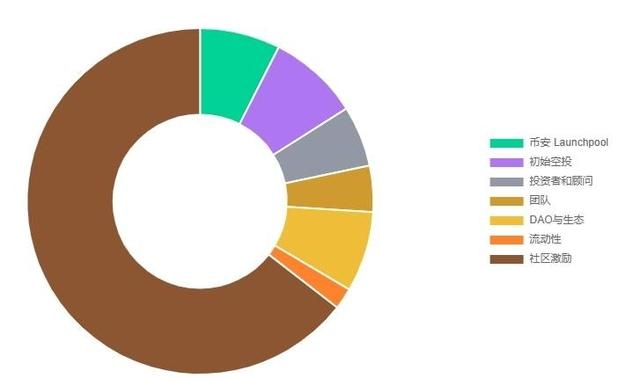More than a month later, Binance's new round of Launchpool has finally arrived. However, contrary to what many expected, this time Usual is not as popular as anticipated, and many seasoned investors, including myself, missed out.
The reason is that Usual issues stablecoins, and many seasoned investors naturally associate it with the booming stablecoin craze of the previous bull market. Every time they hear these two words, they think of the crash. To this day, I still remember how I paid over a hundred U in Gas fees to chase stablecoins back then, and that was that.
In fact, Usual's approach to stablecoins is completely different from what most people understand. Their stablecoin is supported 1:1 by real-world assets (RWA) and is fully compliant, features that are starkly different from traditional algorithmic stablecoins.
According to the official introduction, Usual is a multi-chain infrastructure that integrates tokenized real-world assets (RWA) from BlackRock, Ondo, Mountain Protocol, M0, Hashnote, and others, transforming them into permissionless, on-chain verifiable, and composable stablecoin USD0.
In April of this year, Usual announced the completion of $7 million in financing, led by IOSG and Kraken Ventures, with participation from GSR, Mantle, Starkware, Flowdesk, Avid 3, Bing Ventures, Breed, Hypersphere, Kima Ventures, Psalion, Public Works, and X Ventures.
Seven months later, Usual announced the completion of a new round of financing of $1.5 million, with participation from Comfy Capital, early crypto project investor echo, Breed VC founder Jed Breed, among others. Specific valuation data was not disclosed.

In other words, the only publicly disclosed fundraising amount for Usual is $8.5 million, which is clearly not on the same scale as those projects that raise tens of millions or even over a hundred million. However, while most people were focused on those top-tier projects, Usual made it to Binance, and if you haven't participated before, you can join the Launchpool mining.
Missing out is one thing, but the research on the Usual project should not be overlooked; after all, they have made significant strides in the industry.
1. Founder: Former political advisor to the President of France
Usual CEO Pierre Person was a former member of the French National Assembly, primarily working on monetary policy and has served as a political advisor to President Macron.
In 2022, this guy founded Usual, aiming to rebuild a stable feedback mechanism through decentralized data, allowing users to gain more data ownership.
To this day, Usual's total TVL has surpassed $370 million.

2. USD0: The first liquid deposit token
USD0 is the first liquid deposit token (LDT) offered by Usual, backed by real-world assets (RWA) at a 1:1 ultra-short term support, ensuring its stability and safety. At the same time, USD0 serves as an RWA stablecoin aggregating various US Treasury bond tokens and can be minted through two different methods:
① Direct RWA deposits: Users deposit eligible RWA into the protocol and receive an equivalent USD0 at a 1:1 ratio;
② Indirect USDC/USDT deposits: Users deposit USDC/USDT into the protocol and receive USD0 at a 1:1 ratio. This indirect method involves third-party collateral providers who provide the necessary RWA collateral.
3. $USUAL: 90% of the total supply allocated to the community
$USUAL has a total supply of 4 billion tokens, with an initial circulation of 12.37%, of which Binance Launchpool accounts for 7.5%.

The official documentation emphasizes that 90% of the total token supply will be allocated to the community, with 10% allocated to insiders (team, advisors, investors) to ensure fair distribution and genuine participation for users.
As the official governance token, $USUAL holders will have the actual revenue, future income, and infrastructure ownership of the platform protocol.
Notably, USUAL is deflationary, much like Bitcoin's halving mechanism; the earlier you participate in token distribution, the more tokens you will receive.
Search
